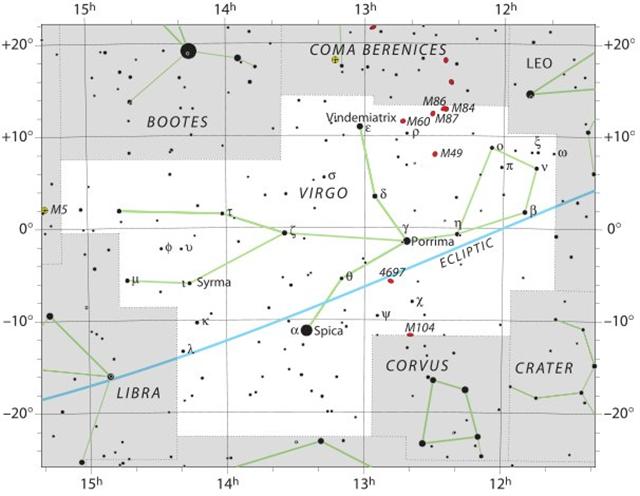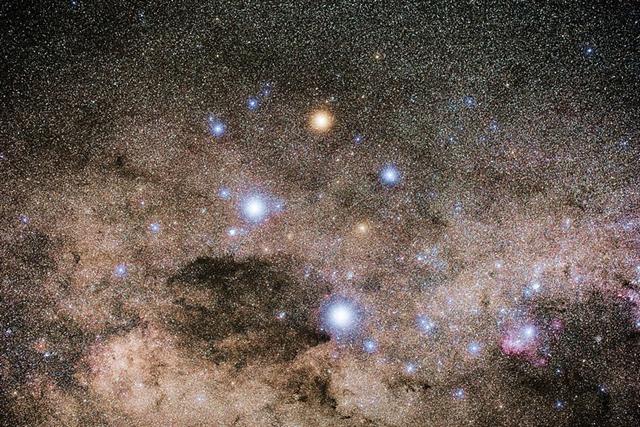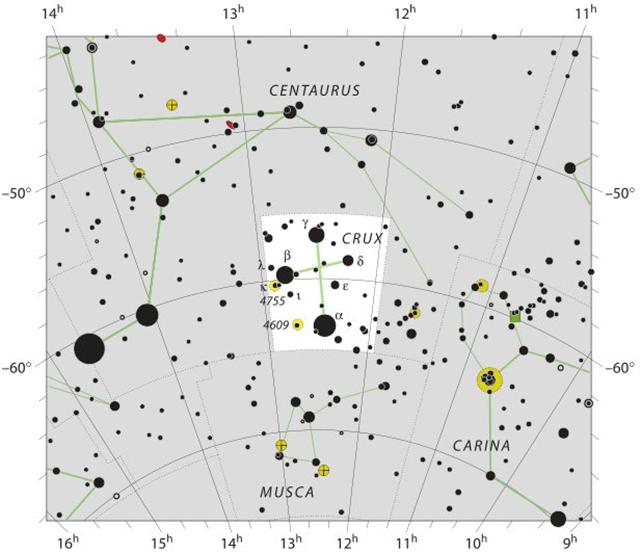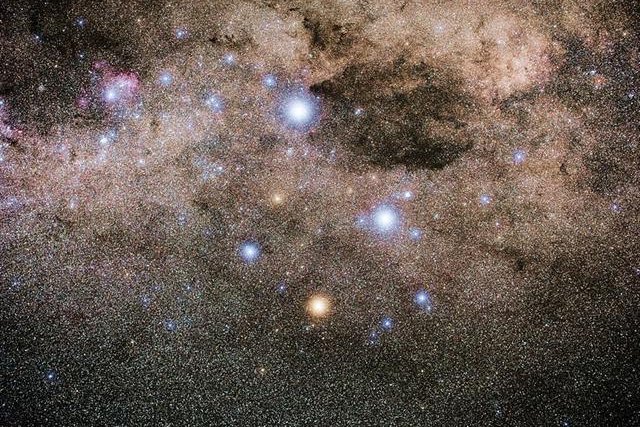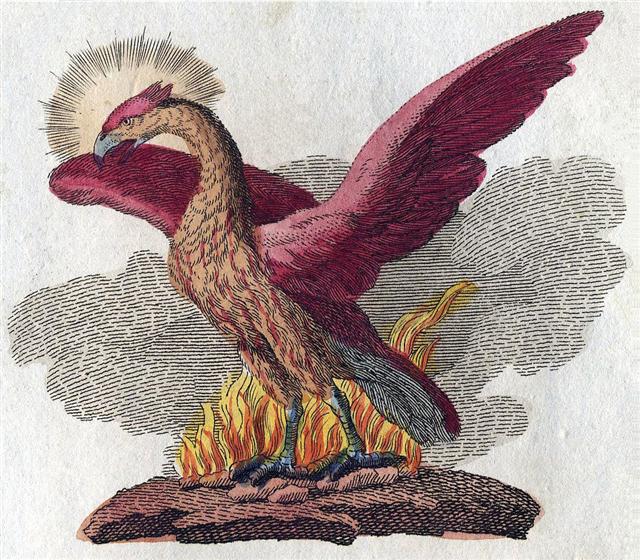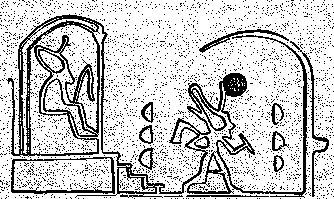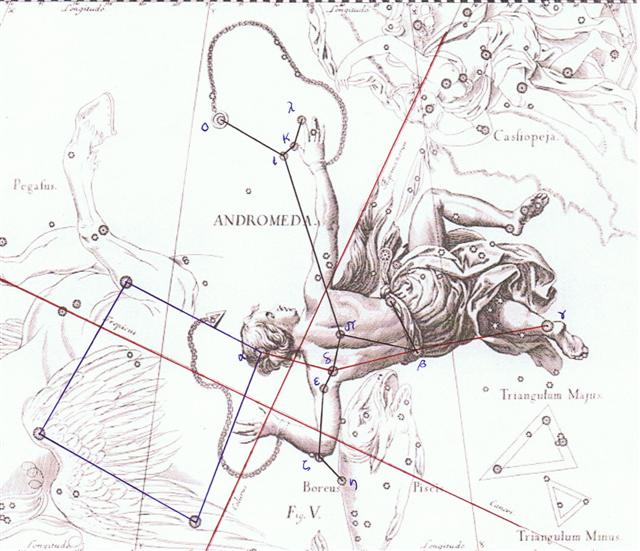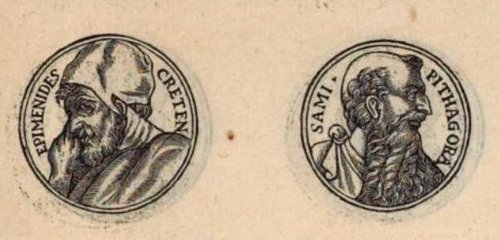476. Once again. The beginning of the text (on side a of the C tablet) was probably attuned to where 0h was, viz. where Sirrah, the Navel of the Horse, could be observed close to the Full Moon: 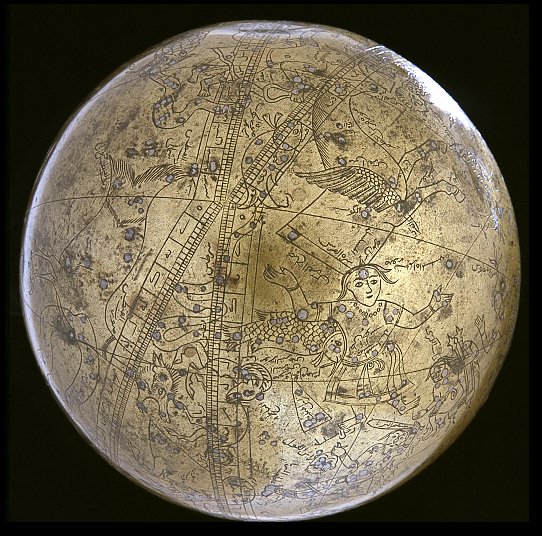 ... Maui was the fifth and youngest of his parents' sons, yet when he was born his brothers knew nothing of it. They first learned that they had a brother when he was discovered one night standing behind them in the great meeting house. Everyone was present, the four brothers, their mother Taranga, and all the relations, and there was dancing going on, when little Maui crept into the house unseen, and went and sat behind his brothers. When it came to their turn to dance, and their mother stood them up and counted them so as to be ready, he stood up with them. 'One, that's Maui mua; two, that's Maui roto; three, that's Maui taha; four, that's Maui pae', she said; these names mean Maui the first, Maui the middle, Maui the side, and Maui the edge. Then she saw this other child standing with them, and cried out, 'Hullo, where did this one come from?' 'I'm your child too', Maui replied. So she counted them again and said, 'Oh no, there ought to be only four of you. This is the first I've seen of you.' And so there was a scene, with little Maui and the old woman arguing about it in the middle of the rows of dancers. In the end she became annoyed with him. 'Now, come on, out of the house!' she said. 'You are no child of mine, you belong to someone else. Go home!' But little Maui stood up for himself. 'Well then, I'd better go, I suppose', he said. 'Since you say so, I must be someone else's child. But I did think I was yours, because I know I was born at the edge of the sea, and you cut off a tuft of your hair and wrapped me in it and threw me in the waves. After that the seaweed took care of me and I drifted about in the sea, wrapped in long tangles of kelp, until a breeze blew me on shore again, and some jelly-fish rolled themself around me to protect me on the sandy beach. Clouds of flies settled on me and I might have been eaten up by the maggots; flocks of seabirds came, and I might have been pecked to pieces. But then my great-ancestor Tama nui ki te rangi arrived. He saw the clouds of flies and all the birds, and he came and pulled away the jelly-fish, and there was I, a human being! Well, he picked me up and washed me and took me home, and hung me in the rafters in the warmth of the fire, and he saved my life. And I grew, and eventually I heard about the dancing you have here in this house, and that is what brought me here tonight.' Now Taranga listened to all this in amazement. For in the custom of our people, if a child was born before it finished growing in its mother's womb and died without knowing any of the pleasures of life, it was supposed to be buried with special prayers and ceremonies, otherwise it became a kind of evil spirit, always doing mischief to the human race and hurting them out of spite, because of having missed the happiness that they enjoy. All the evil spirits had a beginning of this sort. So Maui was a little demi-god of mischief. The story he had told was true, and as his mother listened she remembered it all. 'From the time I was in your womb,' Maui went on, 'I have known the names of these children of yours. Listen,' he said as he pointed to his brothers in turn. 'You are Maui mua, you are Maui roto, you are Maui taha, and you are Maui pae. And as for me, I am Maui potiki, Maui-the-last-born. And here I am.' When he had finished, Taranga had to wipe her eyes because there were tears in them, and she said: 'You are indeed my lastborn son. You are the child of my old age. When I had you, no one knew, and what you have been saying is the truth. Well, as you were formed out of my topknot you can be Maui tikitiki a Taranga.' So that became his name, meaning Maui-formed-in-the-topknot-of-Taranga. And this is very strange, because women in those days did not have topknots. The topknot was the most sacred part of a person, and only men had them ... We can conclude that Maui was born at Sirrah - the Topknot (tikitiki) of Andromeda (Taranga) - ... the progeny of Tu increased: Rongo, Tane, Tangaroa, Rongomai, Kahukura, Tiki, Uru, Ngangana, Io, Iorangi, Waiorangi, Tahu, Moko, Maroro, Wakehau, Tiki, Toi, Rauru, Whatonga - these were the sons ...(Moriori myth of creation accoding to Legends of the South Seas) and also that he was born beyond her regular 4 sons (quarters), for the precession had carried all of them ahead and now the place of her Topknot was 11 + 80 = 91 right ascension days beyond the solstice, viz. at the northern spring equinox (as defined by Gregory XIII). Or the precession could have carried them all 5 * 20 = 100 (April 10) days ahead:
From the glyphs it seems possible to associate to the myth of Raven visiting his grandfather, because here the Sun was at Corvus and a pair of eyes in the first day after the September equinox (Ca1-3) turned into a single eye in the following day (at the Julian equinox in March 25). A pair of Bharani right ascension (heliacal) day numbers (*144 respectively *146) seem to define a position halfway to day *290. The implication could be a sudden change from September to March for the Sun. I.e. when the Sun reached the northern autumn equinox (September 22) he had to jump across to the southern spring equinox (March 25) in order to start anew from his point of birth (as perceived by an observer located north of the equator). ... In the morning of the world, there was nothing but water. The Loon was calling, and the old man who at that time bore the Raven's name, Nangkilstlas, asked her why. 'The gods are homeless', the Loon replied. 'I'll see to it', said the old man, without moving from the fire in his house on the floor of the sea. Then as the old man continued to lie by his fire, the Raven flew over the sea. The clouds broke. He flew upward, drove his beak into the sky and scrambled over the rim to the upper world. There he discovered a town, and in one of the houses a woman had just given birth. The Raven stole the skin and form of the newborn child. Then he began to cry for solid food, but he was offered only mother's milk. That night, he passed through the town stealing an eye from each inhabitant. Back in his foster parents' house, he roasted the eyes in the coals and ate them, laughing. Then he returned to his cradle, full and warm. He had not seen the old woman watching him from the corner - the one who never slept and who never moved because she was stone from the waist down. Next morning, amid the wailing that engulfed the town, she told what she had seen. The one-eyed people of the sky dressed in their dancing clothes, paddled the child out to mid-heaven in their canoe and pitched him over the side ... Corvus is far away from the Milky Way but Andromeda was the daughter of Cassiopeia and we can imagine Andromeda corresponded to the newborn child given mother's milk. Schedir (α Cassiopeiae) means 'breast':
The day when the Sun was at the Breast of Cassiopeia could have been deduced from observing Porrima at the Full Moon, which at the time of Bharani would have occurred 150 days after 0h.
When the one-eyed people paddled Raven out to mid-heaven and pitched him overboard this must have happened when Corvus was straight down and not at the equinox. On the other hand, when at the time of rongorongo the Sun was quickly moving from the northern autumn equinox to the southern spring equinox it could be described - I think - as if he was in a bubble of air (needed for breathing and to keep his fire burning) in a golden spirit level:
This seems to have been at the Long Sand-bank (ζ Corvi). A quarter of the precessional cycle earlier the method of transportation from mid-heaven was more easy to imagine, because at that time the gravitation would have rushed him straight down: ... He turned round and round to the right as he fell from the sky back to the water. Still in his cradle, he floated on the sea. Then he bumped against something solid. 'Your illustrious grandfather asks you in', said a voice. The Raven saw nothing. He heard the same voice again, and then again, but still he saw nothing but water. Then he peered through the hole in his marten-skin blanket. Beside him was a grebe. 'Your illustrious grandfather asks you in', said the grebe and dived. Level with the waves beside him, the Raven discovered the top of a housepole made of stone. He untied himself from his cradle and climbed down the pole to the lowermost figure ... The lowermost figure should be far down at the bottom of the Sea, nowadays to be found around 12h after 0h as defined from the ecclesiatical day for the northern spring equinox. Here the dark shadow of Raven can be found:
With the path of the Sun running from left to right (in the fashion used when reading our own texts) and with Acrux turned 180º around to be at the top of Crux instead of at its bottom - i.e. as people on Easter Island would have perceived the constellation from having the star at the south pole, Dramasa, straight above in the south - the Head of Raven must have been perceived as Acrux:
The grandfather gave Raven a pair of sticks which should be connected in a special way, which affirms my interpretation, because at the time of Bharani the star Intrometida (Inserted, ε Crucis) rose *146 (→ 2 / 5 * 365) days after 0h. Here Raven had followed the instructions: ... The old man gave the Raven two small sticks, like gambling sticks, one black, one multicoloured. He gave him instructions to bite them apart in a certain way and told him to spit the pieces at one another on the surface of the sea. The Raven climbed back up the pole, where he promptly did things backwards, just to see if something interesting would occur, and the pieces bounced apart. It may well be some bits were lost. But when he gathered what he could and tried again - and this time followed the instructions he had been given - the pieces stuck and rumpled and grew to become the mainland and Haida Gwaii ... And here he had climbed up again to the level of the surface of the Sea, which could be a description of reaching the place for the Julian equinox, with the Bird of Fire ahead:
There was a woman in the corner who saw Raven when he was out in the night stealing eyes. ... That night, he passed through the town stealing an eye from each inhabitant. Back in his foster parents' house, he roasted the eyes in the coals and ate them, laughing. Then he returned to his cradle, full and warm. He had not seen the old woman watching him from the corner - the one who never slept and who never moved because she was stone from the waist down ... Allen: "In China it (Zaniah, η Virginis) was Tso Chih Fa, the Left-hand Maintainer of Law. It lies on the left side of the Virgin, and just to the westward is the point of the autumnal equinox which the Chinese knew as Yih Mun, Twan Mun or Tien Mun, Heaven's Gate. With ζ it almost exactly marks the line of the celestial equator."
From the Wolf star (η Andromedae) to Zaniah there were *336 - *144 = *192 days.
... Hamiora Pio once spoke as follows to the writer: 'Friend! Let me tell of the offspring of Tangaroa-akiukiu, whose two daughters were Hine-raumati (the Summer Maid - personified form of summer) and Hine-takurua (the Winter Maid - personification of winter), both of whom where taken to wife by the sun ... Now, these women had different homes. Hine-takurua lived with her elder Tangaroa (a sea being - origin and personified form of fish). Her labours were connected with Tangaroa - that is, with fish. Hine-raumati dwelt on land, where she cultivated food products, and attended to the taking of game and forest products, all such things connected with Tane ...
The topknot was no longer at the top but had been pushed ahead to the forehead we can see from Pythagoras (who had another knot at the other side of his head):
|
||||||||||||||||||||||||||||||||||||||||||||||||||||||||||||||||||||||||||||||||||||||||||||||||||||||||||||||||||||||||||||||||||||||||||||||||||||||||||||||||||||||||||







